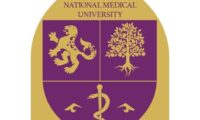Received: 10.03.2023 / Accepted: 19.05.2023 / Published online: 30.06.2023
УДК 615.07
DOI 10.53511/PHARMKAZ.2023.88.26.039
M.Zh. Zhurynov 1, A.F. Miftakhova 1.2, M.K. Khalykberbiyev 1, E.V. Solodova 1.2, A. Murat 2
, A. Ryskulbekova 2
1AO «D.V. Sokolsky Institute of Fuel, Catalysis and Electrochemistry», Almaty, Republic of Kazakhstan
2Al-Farabi Kazakh National University, Almaty, Republic of Kazakhstan
ISOLATION AND STANDARDIZATION OF GLYCYRRHIZIC ACID
FROM LICORICE DRY EXTRACTS
Resume. This article provides research to optimization of obtaining glycyrrhizic acid from dry extracts of the
licorice roots.Acid isolation was carried out from two types of extracts: 50% alcohol extract and aqueous
extract.Glycyrrhizaglabra is a perennial plant, which can grow in various climatic conditions, including dry
and hot regions of Kazakhstan. Stocks of licorice in Kazakhstan are quite extensive and are estimated at
several thousand tons per year. Many scientific researches have been undertaken in conjunction with the
COVID-19 pandemic, because of which it was discovered that licorice roots can help treat serious viral
infections, including SARS-Cov-2. The purpose of this scientific research work is improvement way to get
glycyrrhizic acid in its pure form, since, having large reserves of initial plant materials in Kazakhstan and
using this technology, it is possible to increase the production of glycyrrhizic acid, the demand for which in
the whole world is growing every year. Licorice roots (Glycyrrhiza glabra L.) collected in the Almaty region
were used as plant raw materials. Standardization of pure compound was determined using high-performance
liquid chromatography (HPLC) andIR-spectra on FT-IR spectrometer with a database that includes more
than forty-six thousand spectra.
Keywords: glycyram, glycyrrhizic acid, licorice roots, hydrolysis.
REFERENCES
1 Gemedzhiyeva N., Khrokov A., Heral E., Timoshyna A. Sweet dreams: Assessing opportunities and threats in Kazakhstan’s wild liquorice root trade. Traffic
International, Cambridge, United Kingdom. 2021:36.
2 Diomede L., Beeg M., Gamba A., Fumagalli O., Gobbi M., Salmona M. Can Antiviral Activity of Licorice Help Fight COVID-19 Infection? Biomolecules.
2021;11:855. https://doi.org/10.3390/biom11060855
3 Ermakova V.A., Samylina I.A., Kovaleva T.Yu., Brovchenko B.V., Dorovskikh E.A., Bobkova N.V. Licorice (Glycyrrhiza) roots: analysis of the requirements of
the pharmacopoeia. Pharmacy, 2019;68(6):16–19. https://doi.org/10/29296/25419218- 2019-06-03
4 Mohammad A.S., Mohammad H.E., Zeinolabedin B.S., Fereshteh G. Superheated water extraction of glycyrrhizic acid from licorice root. Food Chemistry.
2016;210: 396–401
5 Ghader J.A., Vahid N., Ehsan A., Mostafa M., Hadi K. Antiulcer properties of Glycyrrhizaglabra L. extract on experimental models of gastric ulcer in mice.
Iran J Pharm Res. 2014;14(4): 1163–1170.
6 Sun Z., He G., Huang N., Thilakavathy K., Lim JCW., Kumar S.S., Xiong C. Glycyrrhizic Acid: A Natural Plant Ingredient as a Drug Candidate to Treat
COVID-19. Front. Pharmacol. 2021;12:707205. https://doi: 10.3389/fphar.2021.707205.
7 Noreen S., Mubarik F., Farooq F., Khan M., Khan A.U., Pane Y.S. Medicinal Uses of Licorice (Glycyrrhizaglabra L.): A Comprehensive Review. Open Access
Maced J Med Sci. 2021;9(F):668-675. https://doi.org/10.3889/oamjms.2021.7526
8 Sergeeva Е.O., Skulte IV, TerekhovAYu, Dodohova MA. Study of the hepatoprotective effect of glycyram in the conditions of alcohol intoxication in rats.
Modern problems of science and education. 2021; DOI:10.17513/spno.31055
9 Tolstikov G.A., Baltina L.A., Shul`ts E.E., Pokrovsky A.G. Glycyrrhizic acid. Bioorganic chemistry. 1997;23(9): 691-709.
10 WHO guidelines on good agricultural and collection practices (GACP) for medicinal plants. – Geneva: World Health Organization. 2003;80.
11 Stolyarova O.V., Baltina L.A., Mikhailova L.R., Gabbasov T.M., Baltina L.A., Tolstikov G.A. Optimizing the Method for Obtaining Monoammonium Salt of
Glycyrrhizic Acid from the Ural Licorice (Glycyrrhizauralensis Fisher) Roots of Siberian Populations. Chemistry for Sustainable Development 2008;16:563–568


































